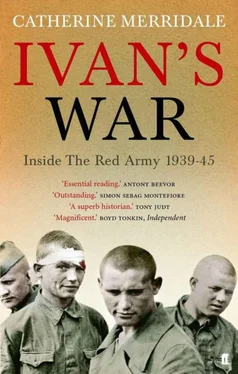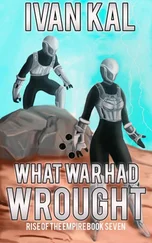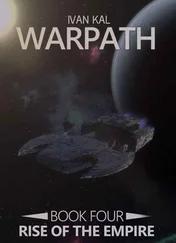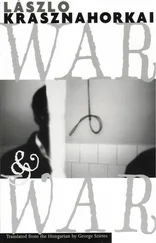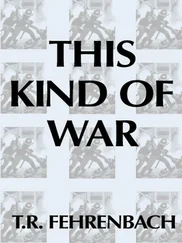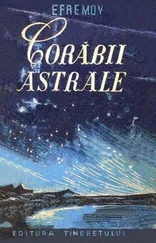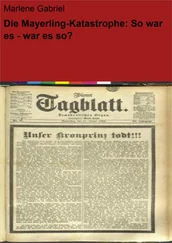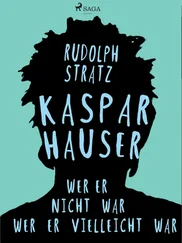126 Glantz and House, p. 269.
127 Chuikov, Reich , p. 251.
128 Beevor, Berlin , p. 405.
129 Belov, p. 476.
130 Glantz and House, p. 269. The higher figure is based on Krivosheev’s global estimate for the campaign on three fronts (1st and 2nd Belorussian, 1st Ukrainian).
131 RGASPI-M, 33/1/1405, 137.
132 RGASPI-M, 33/1/1454, 146.
133 Samoilov, ‘Lyudi’, part 2, p. 96.
134 RGVA, 32925/1/527, 50–3.
135 Other cases occur on almost every page of this same file. See, for example, RGVA, 32925/1/527, 48; 233.
136 Ermolenko, p. 126.
1 Werth, p. 969.
2 RGASPI-M, 33/1/1406, 70.
3 One reason for that was the annihilation of Polish Jews, which reduced the population by approximately 3 million. Poland’s total losses, approximately 6 million people, amounted to about 20 per cent of the pre-war total. See John Keegan, The Second World War (London, 1989), p. 493.
4 Figures vary, and to some extent, since all are estimates, it is impossible to compare the scale of losses. But a recent Russian account suggests that the ratio of Soviet to German military losses was 1.3:1 (even taking into account the losses of each adversary’s allies). In terms of battlefield deaths, the true figure may be higher than 1.6:1. See Velikaya Otechestvennaya Voina , 4, p. 292; Glantz and House, pp. 292 and 307; Krivosheev, pp. 152–3 and 384–92.
5 Overy, pp. 287–8.
6 The official exchange rate in 1940 was 5.3 roubles to the dollar, but this has little real meaning in view of the currency controls in operation throughout the Soviet era. Velikaya Otechestvennaya Voina , 4, p. 294; Overy, p. 291.
7 Vsevolod Vyshnevsky, cited in Werth, p. 942.
8 See Vera S. Dunham, In Stalin’s Time: Middleclass Values in Soviet Fiction (Cambridge, 1976), p. 11.
9 Cited in Drugaya voina , p. 298.
10 GARF, 7523/16/79, 173.
11 Ibid .
12 GARF, 7523/16/79 contains several others, including a demand for general amnesty and numerous requests to review the penal code.
13 Ibid ., 17.
14 Overy, p. 292.
15 Dunham, p. 9; Merridale, Night of Stone , p. 323.
16 The rumour was repeated even in the soldiers’ letters home. See, for example, Snetkova, p. 48.
17 E. Yu. Zubkova, Obshchestvo i reformy, 1945–1964 (Moscow, 1993), p. 43.
18 On adaptation, see Ben Shephard, A War of Nerves (London, 2000), pp. 328–9.
19 Moskva voennaya , p. 708.
20 Ibid ., p. 707.
21 Lists of the military participants occupy an entire number of Voenno-istoricheskii arkhiv – 12 (3), 2000. The instructions for the day are printed in ibid ., no. 8, 2000, pp. 259–77.
22 Werth, pp. 1002–3.
23 RGASPI-M, 33/1/1405, 157–8.
24 Ermolenko, p. 143.
25 For more detail of the campaign, see Glantz and House, pp. 278–82.
26 For an account, see Joseph Polowsky’s testimony in Studs Terkel, A Good War: An Oral History of World War II (New York, 1984), pp. 444–50.
27 GARF, 7077/1/19, 7–10.
28 GARF, 7399/1/3, 126.
29 Cited in Naimark, p. 74.
30 GARF 7317/7/147, 7317/7/118, 31.
31 GARF, 7077/1/19, 13.
32 Ibid .
33 GARF, 7399/1/3, 153–4.
34 Ibid ., 125–7.
35 Ibid ., 34; 7317/7/147, 76.
36 Ibid ., 98.
37 GARF, 7077/1/178, 10–11.
38 GARF, 7399/1/3, 95.
39 GARF, 7399/1/1, 2.
40 Ibid ., 14–15.
41 An example among many was Frankfurt on the Oder (GARF 7399/1/3, 11–15), where discipline had ‘become better than before’ by early July. See also GARF, 7317/7/124b, 36–9, which relates to Berlin.
42 GARF, 7317/10/23, 48–9.
43 Naimark, p. 74.
44 GARF, 7399/1/1, 16.
45 GARF, 7317/7/124b, 5.
46 On the duty of Germans to die for the clean-up, see GARF, 7523/16/79, 215.
47 Velikaya Otechestvennaya Voina , 4, p. 191.
48 Ibid .
49 GARF, 7077/1/178.
50 Velikaya Otechestvennaya Voina , 4, 191–2; Overy, pp. 302–3. For a discussion of the repatriations in general, see Nikolai Tolstoy, Victims of Yalta (London, 1977).
51 Incidents and interviews appear in GARF, 7317/20/15, 42–68.
52 Velikaya Otechestvennaya Voina , 4, pp. 192–3.
53 GARF, 5446/48a/13, 9–11.
54 Ibid ., 26–7.
55 Ibid ., 27.
56 Overy, p. 302.
57 GARF, 7317/7/124v, 18–19.
58 GARF, 7317/20/13, 76.
59 GARF, 7399/1/3, 42; 7317/20/13, 74.
60 GARF, 7184/1/65, 180.
61 GARF, 7523/16/79, 163.
62 TsAMO, 136/24416/24, 19–21.
63 GARF, 7184/1/57, 347–8.
64 Velikaya Otechestvennaya , 2(3), 378.
65 GARF, 7184/1/57, 347.
66 Pushkarev, Po dorogam voiny , p 160.
67 GAOPIKO, 1/7/3755, 53.
68 TsDNISO, 6/1/2005, 16.
69 GAOPIKO, 1/13755, 5.
70 GARF, 7523/16/54, 1.
71 Smolensk figures from oblast records (TsDNISO, 6/1/2005, 12–16) and district reports (6/1/2005, 24, 47).
72 This story is told in Nina Tumarkin, The Living and the Dead , p. 104; Garrard and Garrard, Bones , pp. 215–6.
73 On the fulfilment (or otherwise) of Sovnarkom resolutions on war graves, see GAKO, R3322/10/81, 33–4. Simonov’s call for a kind of Soviet orderliness in place of the soldiers’ own tastes in memorials is noted in RGALI, 1814/6/144, 52.
74 GARF, 5446/48a/2657, 161.
75 Of 1,913 buildings commandeered as hospitals by May 1945, 333 were former educational institutions and eighty-four their former halls of residence. GARF, 5446/48a/2657, 161.
76 TsDNISO, 37/1/264, 8.
77 Tumarkin, p. 98.
78 GARF, 8009/35/20, 2.
79 Ibid ., 2–3.
80 Night of Stone , p. 315.
81 For literary examples, see Dunham, pp. 10–11.
82 Report from Leningrad hospitals, TsGASPb, 9156/4/321, 14–15.
83 Night of Stone , p. 305, also referring to reports from post-war Leningrad.
84 See Overy, p. 312.
85 Grossman, Life and Fate , p. 141.
86 On Leningrad, see Ehrenburg, p. 11.
87 See Dunham, especially Chapter 13, pp. 214–224.
88 Doctors working in rural areas near Leningrad at the time would find that peasant women also stopped menstruating, which they ascribed to a kind of mourning, but which may as easily have been the result of poor diet and heavy manual work. See Night of Stone , pp. 312–3.
89 Alexiyevich, p. 206.
90 GARF, 8009/35/20, 2–3.
91 Night of Stone , p. 314; see also Werth, p. 520.
92 RGASPI-M, 129.
93 RGASPI-M, 33/1/1404, 131; 33/1/1405, 118.
94 For Vera Dunham’s tart summary, see In Stalin’s Time , p. 214.
95 See Overy, pp. 309–11; Bones, pp. 219–28; Night of Stone , p. 273.
96 Applebaum, Gulag , pp. 414–23.
97 Night of Stone , pp. 317–9; See also Robert Service, A History of Twentieth-Century Russia (London, 1997), p. 319.
1 On Stalinism and Russian nationalism among veterans after 1945, see Druzhba, p. 43.
2 Like Stalin, he also sacked Zhukov. See Robert Service, Twentieth-Century Russia , p. 372.
3 Khrushchev attacked what he described as the cult of Stalin’s personality, and with it, many of the excesses of Stalin’s dictatorship. See N. S. Khrushchev, Khrushchev Remembers , trans. Strobe Talbott (London, 1970), pp. 559–618.
4 For the memorials, see Michael Ignatieff, ‘Soviet War Memorials,’ History Workshop Journal , 17 (Spring 1984), pp. 157–63.
Читать дальше
